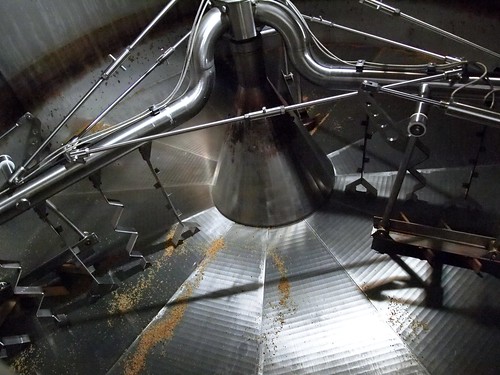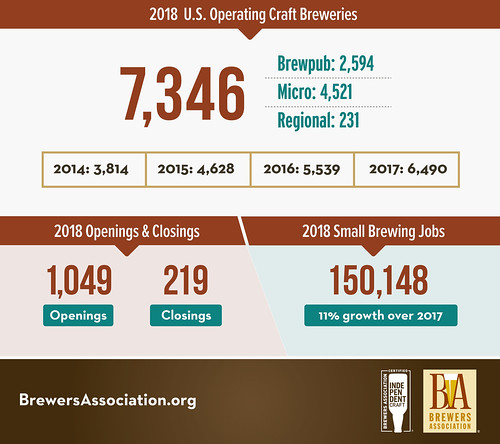
"You can’t make great beer without clean water."
Four ingredients comprise most of beer: water, barley malt, hops, and yeast. Of those, water holds the greatest share by far, 95% of beer's makeup, give or take a few percentage points.
Not only is clean water critical for our health and our economy—it’s essential to making a great-tasting pint. That’s why almost 100 breweries have joined the National Resources Defense Council (NRDC) to work to protect the
Clean Water Act of 1972.
Brewers for Clean Water (
BFCW) advocate for measures that safeguard their water sources from upstream pollution and keep waterways clean for their downstream neighbors.
One major fight of the
BFCW campaign is to save the 2015
Clean Water Rule, which clarifies the scope of the 1972
Clean Water Act and protects vulnerable waterways from pollution and destruction.
Brewers for Clean Water members were instrumental in persuading the U.S.
Environmental Protection Agency to adopt this important rule. Now they’re working hard to counter efforts to repeal it.

In March, a group of 59 'craft' breweries, partners in NRDC’s
Brewers for Clean Water campaign, sent
a letter to both the
Environmental Protection Agency and
U.S. Army Corps of Engineers opposing the agencies’ '
Dirty Water Rule' proposal to slash clean water protections for waterways around the country.
Mr. Andrew Wheeler, Administrator, Environmental Protection Agency
Mr. R.D. James, Assistant Secretary of the Army, Civil Works, U.S. Department of the Army
Dear Administrator Wheeler and Assistant Secretary James:
We oppose your proposal to substantially limit the number of waterways receiving protection under the Clean Water Act. This rule would endanger critical wetlands and streams across the country—waterways that our craft breweries depend on to provide the clean water we use to brew our beer.
Beer is mostly water, so the quality of our source water significantly affects our finished product. Compounds present in brewing water can affect pH, color, aroma, and taste. Sulfates make hops taste astringent, while chlorine can create a medicinal off-flavor. The presence of bacteria can spoil a batch of beer. Even small chemical disruptions in our water supply can influence factors like shelf life and foam pattern.
Unexpected changes in water quality—due to pollution in our source water, or a change in the treatment process at our local drinking water plant—can threaten our brewing process and our bottom line. We need reliable sources of clean water to consistently produce the great beer that is key to our success. It is thanks in part to this important natural resource that the craft brewing industry contributes about $76.2 billion to the U.S. economy each year, along with more than 500,000 jobs.
For years, craft brewers have been asking for more clean water protections, not fewer. We supported the 2015 Clean Water Rule because it helped protect the sources of drinking water for 117 million Americans from pollution and destruction, providing certainty that we would continue to have access to the clean water on which our livelihoods depend. Importantly, that rule was based on sound science. The record showed that the waters it protected had biological, chemical, and physical connections to larger downstream waterways.
This proposed rule, to the contrary, ignores the overwhelming scientific evidence that protecting small streams and wetlands is essential to ensuring the quality of America’s water sources. It would prohibit applying federal pollution-control safeguards to rain-dependent streams and exclude wetlands that do not have a surface connection to other protected waters. It also invites polluters to ask for even greater rollbacks, such as eliminating protections for seasonally-flowing streams.
We strongly oppose these proposed changes, which would affect millions of miles of streams and most of the nation’s wetlands. Science shows that protecting these waters is important to downstream water quality. We must maintain clear protections for the vulnerable waterways that provide our most important ingredient.
We are depending on you not to roll back the safeguards established under the Clean Water Act. Protecting clean water is central to our long-term business success. Moreover, it is vital to the health and the economy of the communities where we live and work.
Thank you for considering our views on this important matter.
— The 59 brewery signatories to this letter.
Kudos to these brewers.
Nevertheless, there are over 7,300 'craft' breweries in the United States. One wonders why only fifty-nine were concerned enough about their prime ingredient that they would sign this letter. Or why the signature of their industry representative, the [U.S.]
Brewers Association, is absent.
.png) VeggieDag Thursday is an occasional Thursday post
VeggieDag Thursday is an occasional Thursday post
on an animal-free diet and on environmental and ecological issues.
-----more-----




.png)















